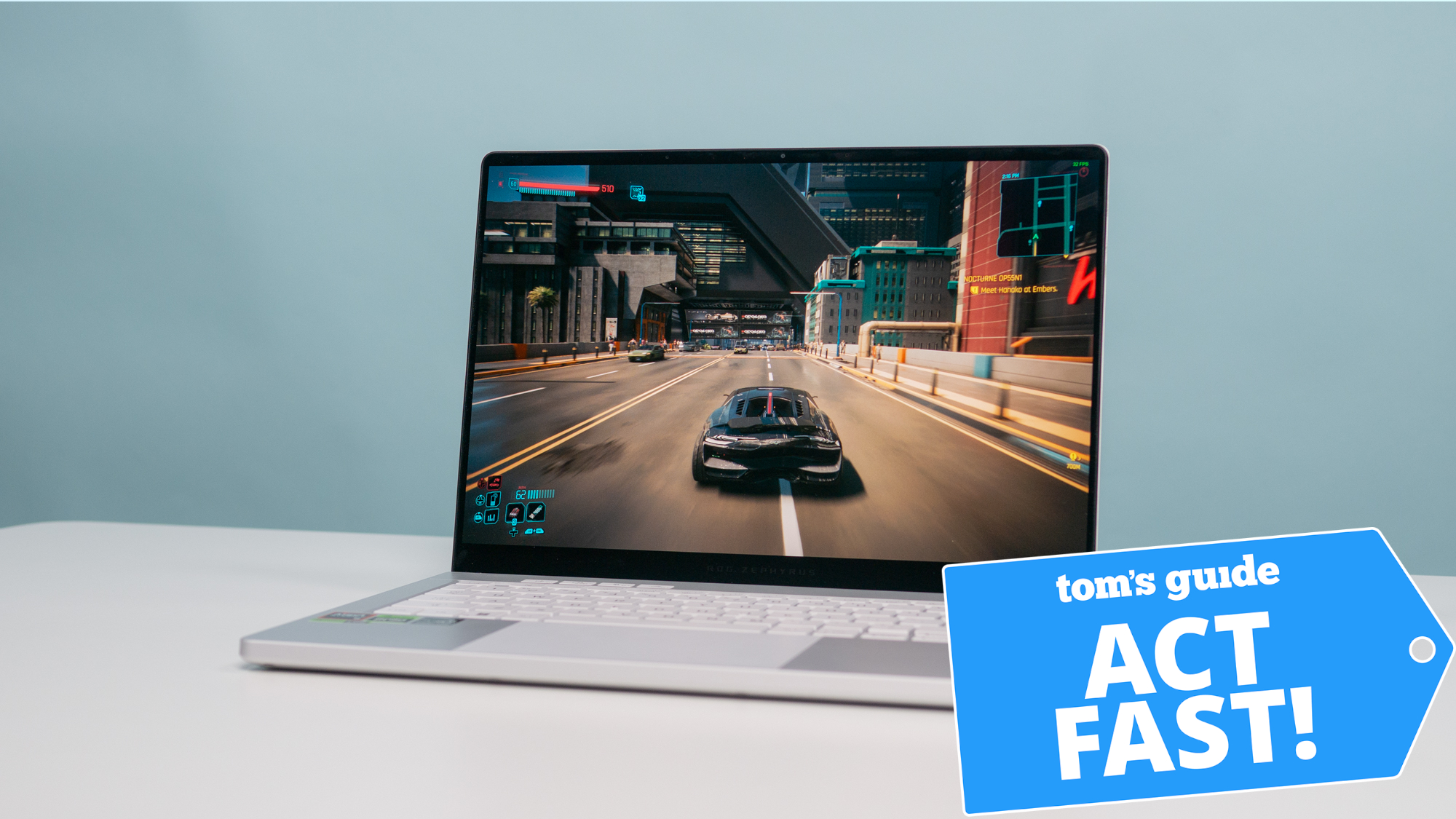Tom's Guide Gaming Glossary
Stumped by the video-game jargon your friends, family and co-workers toss around? Here's our glossary of gaming terms.
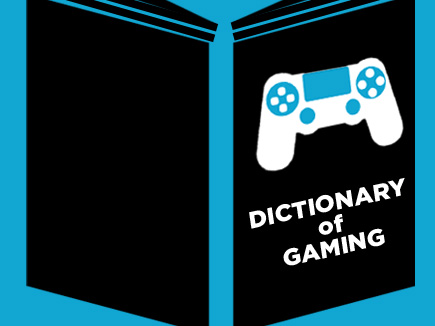
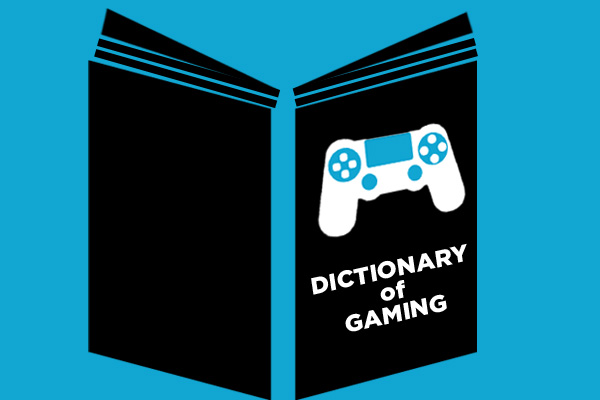
Over the past 35 years, video games have generated hundreds of terms that can be incomprehensible to non-players. Rather than explain these terms in every game review and game-related news piece we run, we've created a separate glossary to help you understand them.
We'll be updating this list regularly, so don't be alarmed if terms you think should be here haven't shown up yet.
Basic gaming terms
Avatar:The visual representation of a player's character.
Boss:A challenging enemy found at the end of a level, dungeon or game, who must be defeated for players to progress in the game or win altogether.
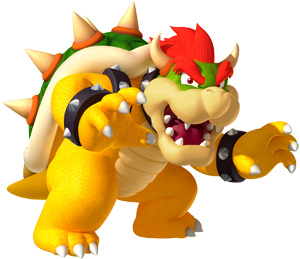
Boss battle: The pivotal battle against a boss. Tougher than ordinary battles.
Devs:Short for "developers." The game's creators, programmers and designers.
Grunts: Low-level adversaries who are numerous but easily defeated.
Sign up to get the BEST of Tom's Guide direct to your inbox.
Get instant access to breaking news, the hottest reviews, great deals and helpful tips.
Hearts:An alternate term for a character's life points or health. The term was popularized by the Legend of Zelda series, which indicates health as a series of small hearts. Other games may use a sliding bar or meter to indicate health.
HP: Hit points, used interchangeably with the amount of "life" a character has. Derived from the tabletop role-playing-game Dungeons & Dragons.
MP: Magic points, used to denote the amount of energy or "mana" a character has. Used for casting magic or other skills.
NPC: A non-player character, controlled by the game, who does not take part in the action.
Mechanic (game mechanic or system): The way that a game creates world conditions, including combat, health, movement, special abilities, etc.
Mooks: Generic, usually low-level enemies who serve as henchmen or grunts for a game's villain.
Miniboss:A challenging enemy, more powerful than generic enemies (also known as "mooks" or "mobs"), but not as challenging as full bosses. Usually found halfway through a game or dungeon.
Open world:A game world that is fully or mostly explorable right from the start of the game, with little or no restriction on player movements, but may still impose some sort of linear progression on the player.
Sandbox: An especially non-restrictive type of open world in which the user has absolute freedom of movement and doesn't have to adhere to any kind of linear progression. Sandbox games will often have very large sprawling levels and large numbers of NPCs. Examples: the Grand Theft Auto and Just Cause series, and Minecraft.
Types of video games
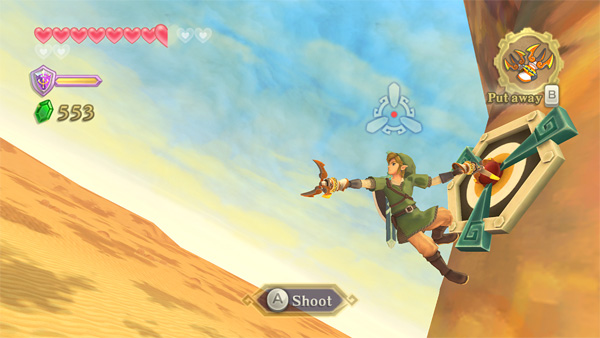
Action game: A game with live combat that the player controls, as opposed to selecting moves from a menu. Examples: the Legend of Zelda series (pictured above) or Shadow of the Colossus.
FPS: First-person shooter. A game with a first-person perspective, in which players rarely, if ever, see their own player character. Gameplay revolves primarily around aiming and shooting. Examples: BioShock, Half-Life, Halo, Portal.
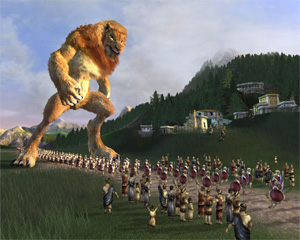
God game:An RTS or similar game in which players act as a sort of omniscient invisible guide that controls many smaller units or civilizations. Examples: The Black & White series (pictured right), The Sims, Spore.
Indie game: A game developed by a (relatively) small studio. Indie games generally have a reputation for being more creative and risk-taking, since they have smaller budgets and shorter development cycles. See: Braid, Bastion, Gone Home.
JRPG:A Japanese role-playing game. Usually with multiple main characters and set in a fantasy or science-fiction setting. JRPGs are associated with certain cultural tropes such as an "anime" aesthetic, the blending of Western mythology and original story design and an epic "save the world" plot. Examples: the Final Fantasy series, the Tales series.
MOBA: Multiplayer online battle arena. In these games, players role-play as one or more characters and increase the characters' levels and skills by playing matches with and against other players. MOBAs do not have persistent worlds as MMORPGs do; gameplay is match-based. Examples: League of Legends, Defense of the Ancients 2 (DOTA2)
MMORPG: Massively multiplayer online role-playing game, in which players role-play as one or more characters and increase the characters' levels and skills during the course of play. MMORPGs also have "persistent worlds" that the characters always occupy. Examples: World of Warcraft.
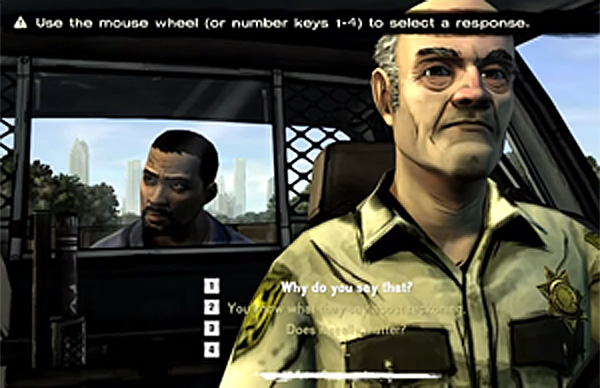
Point-and-click: Short for "point-and-click adventure game," this is a game in which players click on objects in the screen to trigger dialogue and basic scripted actions. Point-and-click games are often more story-driven and/or puzzle-driven than games with more complicated gameplay. Example: The Longest Journey, Myst, The Walking Dead (pictured above).
RPG: A role-playing game, in which you take control of one or more characters. Usually also refers to a game in which these characters undergo growth in the form of increasing levels or statistics. Examples: Mass Effect, Elder Scrolls V: Skyrim, Red Dead Redemption.
RTS: Real-time strategy. Top-down army management and production games in which a player controls multiple units in order to conquer a map or objective. Examples: StarCraft, the original Warcraft series.
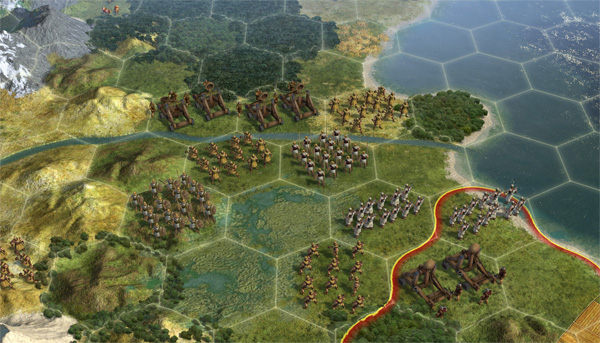
TBS: Turn-based strategy. See: the Fire Emblem series, the Civilization series (pictured above) and the XCOM series. Also can be referred to as SRPG (strategy RPG).
Third-person shooter: A cross between a FPS and an action game, where you can see your player character but the main means of combat is aiming and shooting. See: Tomb Raider, the Uncharted series or Gears of War.
Fighting-game terms
Bread and butter:A character's basic "go-to" combos.
Buffer:The act of preparing the motions for a special move before you execute it.
Cancel: The interruption of the current move to initiate a different move without interruption. Can be used to end animations or combos sooner than normal.
Combo:A flurry of connected attacks, which are usually impossible to interrupt.
Combo Meter: An energy bar that can be charged up to unleash stronger than normal special moves or attacks.
Dragon punch:Also known as shoryuken, the famous uppercut as used by Ryu, Ken and more. Performed by doing a Forward, down, diagonal forward motion.
Evo Moment #37: A legendary sequence in fighting-game history. During a Street Fighter match at the Evo 2004 tournament, Daigo Umehara as Ken full-parried Justin Wong's Chun-Li super combo with just a sliver of life left. Commentary by then-Capcom designer Seth Killian.
Footsies:The act of two players using their normal attacks to control space and try and poke their opponent. Example: Ryu's crouching medium kick is a great footsie tool.
Frame: Animation frames used to measure moves. Example: Ryu in Street Fighter has a 5-frame jab. One frame is usually 1/60th of a second.
Frame Trap: The act of making an opponent block a move that puts them in a disadvantageous position, allowing you to follow up with more pressure.
Happy Birthday: The act of catching multiple characters in a combo during a tag-team-based game. For example, if you manage to hit your opponent's Magneto, Dr. Doom and Phoenix all at once in Marvel vs. Capcom, that's a happy birthday.
Hadoken: Ryu's famous fireball in Street Fighter, performed by doing a quarter-circle forward motion.
Hard Knockdown: When a player gets knocked down and cannot immediately recover. Scoring a hard knockdown gives the offensive player more time to plot his next move.
Infinite: A combo that can be continued forever until the opposing character is dead. See Iron Man in "Marvel vs Capcom 2."
Matchup: How two characters in a game stack against each other. Example: Ryu is a bad matchup for Chun-Li in Street Fighter.
Normals: A character's default attacks, like hard punch or light kick.
Option Select: An action with two possible outcomes based on the player/opponent's position.
OTG: On the ground.
Poke: See Footsies.
Priority: When two fighters hit each other at the same time, priority is used to determine which attack is stronger and will damage the opposing player.
Setup: A premeditated plan consisting of one or more actions. For example, tricking your opponent into walking into your fireball is a setup.
Snapback: Used in tag fighting games to knock the current fighter out of the match and force one of the other fighters into battle from offscreen.
Tick throw: The act of making an opponent block a move and immediately following up with a throw, catching them off guard.
Trade: When both characters hit and damage each other at the same time.
Wakeup: The state in which a character is getting off the ground.
Wave Dash: An advanced method that allows the player to quickly dash forward and backward. Has different applications in games like Super Smash Bros, Marvel vs. Capcom and Tekken.
Wombo combo: An incredible chain of combo attacks defeating multiple enemies, named after a recorded Super Smash Bros. session that became an Internet meme.
First-person-shooter terms
Aim-bot: A cheat used by less scrupulous players to allow them to aim perfectly. It's easy to spot aim-bot users by their high accuracy or their tendency to spin around unnaturally in the game as the bot seeks a new target.
Bunny hop: Continually jumping to make it more difficult for enemies to hit you. In some games can also increase your speed.
Frag: Blowing stuff up; killing.
Headshot:An instant kill. Usually to the head. Requires a great deal of skill.
No-scope: Killing an enemy with a sniper rifle without using the scope.
One-shot:One shot. One kill.
Rocket jump:Shooting a rocket at your feet to use the explosion for a longer jump.
Strafe jumping: A technique used to jump while holding forward and strafe keys to increase max velocity. Most famously used in games based on the Quake engine.
Tele-frag: Killing another play or enemy by teleporting inside them and blowing up their bodies.
Hit-scan: A type of weapon, such as a machine gun or pistol, which hits its targets almost instantly, unlike a rocket launcher or disk thrower where projectile speed is calculated.
Massively multiplayer role-playing game terms
Aggro: The enmity or aggression of a monster, often held by "tanks" to prevent a monster from going after more vulnerable targets, such as a healer or damage dealer.
Area of effect (AoE): An attack or spell that can affect multiple targets in a set area. Example: A hurricane spell that hits every enemy within its area.
Cooldown: The amount of time after using a skill for it to be available again.
Leeroy Jenkins: Rushing into a situation with little understanding and getting every friendly character — including yourself — killed. Originated in a (possibly staged) World of Warcraft attack in which a player did just that while shouting his own shouting his own character's name. Can function as a verb or noun. Often shortened to just Leeroy.
Melee: A close-quarters physical attack using fists, swords, axes, etc.
Mob:Short for "mobile,"another term for game-controlled monster. Originated from the days of text-based RPGs.
Persistent world:A game world that exists even when one or all game players log out. Timed events and delayed results of a player's actions happen in a persistent world even if individual players aren't there to see or trigger them.
PVE (player vs. environment): Also known as "player vs. monster" (PVM), a game mode that can played alone, with human companions or AI (artificial intelligences, or computer-controlled characters).
PVP (player vs. player): A multiplayer game mode between two or more human participants.
Raid: Large groups, often consisting of between 10 and 40 players, who cooperate to defeat a dungeon, boss or other players.
Respawn:The act of a monster reappearing after being killed, especially important in MMOs as otherwise there would be no monsters to kill.
Respec: Respecification, used primarily to describe the process of reassigning talents to achieve a different configuration, such as to become more offensive or gain increased mobility.
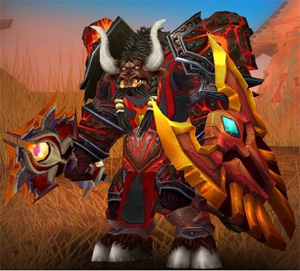
Tank: Player type that is physically imposing, able to mitigate large amounts of damage and even provoke enemies to attack them. Can also be used to describe more durable characters or abilities (i.e. tanky or tankiness).
Taunt: An attack or ability that will provoke an enemy to attack a specific person, often a tank.
Telegraph: Method used to demarcate where an AoE will be launched.
Theorycraft:The mathematical analysis of game mechanics to determine the best tactics and strategies to maximize player effectiveness.
Time sink: An action or event that consumes a large amount of time, such as long cooldowns that prevent an ability from being used again within a certain time, or the amount of time it takes for a monster or boss to respawn.
Void zone: Lava, black holes or any area you can't stand or walk in without taking damage. Originated in World of Warcraft.
Real-time strategy/Multiplayer online battle arena terms
The MOBA genre originally derived from a modification of the RTS game Warcraft III (itself a relative of the MMORPG World of Warcraft) and the two genres share many terms and names.
A-move: Attack-Move, a command that will instruct units to automatically attack any enemies encountered on the way to a specified destination. Different from a regular move, in which units will ignore enemies until they reach the specified destination.
APM: Actions per minute, which can be triggered by either mouse clicks or presses on a keyboard,
Blink: A short-ranged teleport.
Expand: The act of building a new or secondary base for gathering resources and/or producing an army.
Fog of war: The area of a map where you do not have direct vision. You will often be able to see only what was last visible when you had direct vision.
Macro: The ability to utilize resources as they are gathered to produce an army as fast as possible.
Maynard: Transferring workers from one resource area to another to more evenly distribute resource-gathering.
Micro: The act of controlling individual units inside an army in order to fully maximize its abilities.
Natural: The closest and most easily accessible place to expand and build an additional base.
Orb-walk or stutter step: A process where you instruct a unit to move while their attack is on cooldown. This is important for being able to increase efficiency and use the time when you cannot attack to reposition a unit instead of just standing still.
Pop cap: Population cap, or the maximum number of units that can be in an army.
Resources: Strategic materials that are gathered to create an army. Examples: gold and stone, or minerals and Vespene gas, as seen in StarCraft.
Split: Individually controlling units to spread them out. Can be used to avoid AOE attacks or better distribute workers to gather resources.
Zerg: To overwhelm an opponent with sheer numbers, after the insectlike enemy race in the "StarCraft" series.
Role-playing-game terms
Dungeon:A closed-off area (sometimes called a level) in a game world that players must traverse, usually solving puzzles and fighting enemies along the way. Dungeons in games may or may not be actual "dungeons" as in "prisons in a castle." Often a dungeon has a final challenging enemy, called a "boss."
Esper: Player type similar to mages, using both midrange and long-range attacks. Espers' powers are psychic (ESP) in nature, using psychic projections and psyblades.
Glass Cannon: A player type that is extremely powerful but also extremely prone to damage. Mages, espers and archers are often classified as glass cannons.
Grind/Grinding: Repeatedly performing an action, such as battling, crafting or mining, to gain experience points and reach the next character level.
Level cap: The maximum level a playable character can achieve, set by game developers.
Leveling: The process of reaching the next level in a character's progression, usually by gaining experience points from combat or other specific actions such as crafting or accomplishing certain tasks. When a player engages in repetitive battling or other tasks just for the sake of leveling up, it's called "grinding."
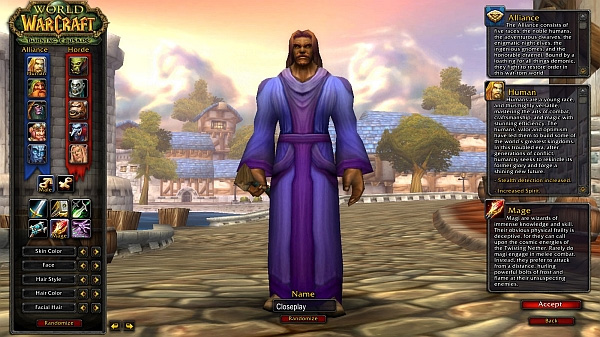
Mage: Player type that specializes in casting spells, often has many midrange to long-range attacks, but with low defenses.
Procedurally generated: A type of game in which developers don't actually design environments detail by detail; instead, levels are created each time a player starts the game or a given level, according to an algorithm. Examples of games with procedurally generated components include FTL: Faster than Light and Below.
Ranged spell: A spell that can only hit a predetermined range, so the player must plan accordingly – 15 feet, 10 feet, 5 feet, etc.
Side quest: Any mission that doesn't pertain directly to the game's main plot.
Talent tree: An interactive chart displaying available talents to augment character abilities. More skills can be unlocked via leveling.
Tom's Guide upgrades your life by helping you decide what products to buy, finding the best deals and showing you how to get the most out of them and solving problems as they arise. Tom's Guide is here to help you accomplish your goals, find great products without the hassle, get the best deals, discover things others don’t want you to know and save time when problems arise. Visit the About Tom's Guide page for more information and to find out how we test products.

